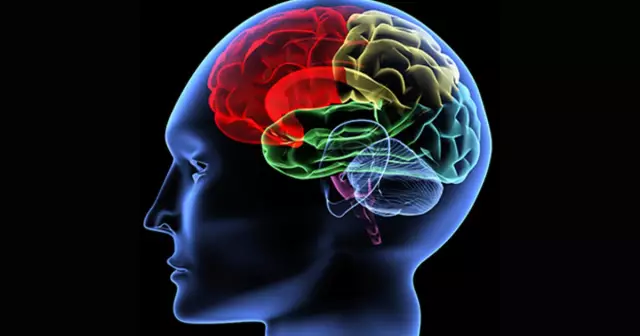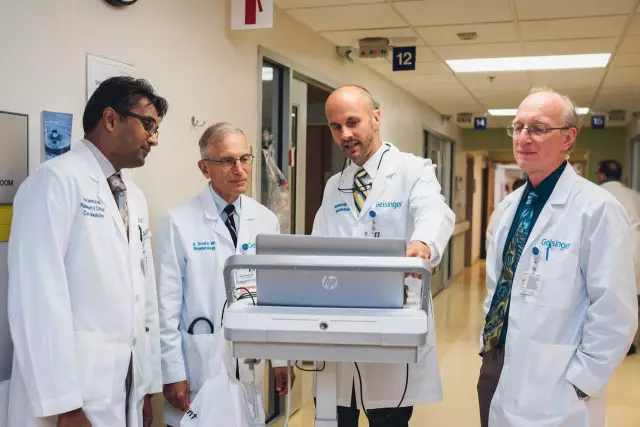- Author Rachel Wainwright [email protected].
- Public 2023-12-15 07:39.
- Last modified 2025-11-02 20:14.
10 common misdiagnoses
The popular joke that there are no healthy people, but there are under-examined, is considered by the majority to be the pure truth - we often hear that we are all sick almost from school. But sometimes people are treated for non-existent diseases, and sometimes they call something a disease that is not a disease at all. It happens that the old school doctors are to blame for the situation, making diagnoses that have long been canceled - after all, medicine continues to develop. Sometimes the reason is that people who are very far from medicine diagnose themselves, focusing on fragmentary information gleaned from popular media or rumors.
In this article, we will talk about diseases that do not exist or are not actually diseases.
Cellulite
The scourge of the modern woman, cellulite is perhaps the most frequent "disease" in the world. Indeed, sooner or later it appears in almost 100% of women, both full and medium-bodied, and in men it is not so rare. But in this case, it's time to think: isn't it the norm? Doctors answer - it is.
Cellulite in the understanding that we put into this concept is not a pathology and does not require treatment. In fact, it is hardly noticeable, and if the aggressive propaganda of "ideal" beauty did not constantly draw people's attention to this nuance, the problem would not exist. It is enough to look at the canvases of the old masters, especially those who loved to depict naked, magnificent ladies. Cellulite has always been a natural property of the female figure. The myth of cellulite as a terrible aesthetic flaw is making huge profits for anti-cellulite manufacturers, which is probably why it is constantly fueled.

Source: depositphotos.com
Osteochondrosis
Osteochondrosis - ossification of cartilage tissue. Osteochondrosis is very fond of treating chiropractors and masseurs, and it is not surprising - you can treat it as long as you like, because it is nothing more than age-related changes in the joints. Osteochondrosis appears in everyone upon reaching a certain age, and then it is already useless to treat it: it is impossible to reverse the processes of ossification. The only effective method of dealing with osteochondrosis is its prevention, but it does not require the participation of specialists. To slow down the aging of the joint tissue, "just" you need to lead a healthy and active lifestyle, and preferably not from next Monday, but from youth.

Source: depositphotos.com
Rheumatism
When a person, groaning, clings to the lower back and calls it an attack of rheumatism, you need to understand that there is pain, but rheumatism is unlikely. Lower back pain can be caused by various reasons: kidney disease, intervertebral hernia of the lumbar spine, nerve entrapment, etc. Rheumatism is one of the groups of autoimmune pathologies in which the immune system suddenly ceases to recognize the cells of its own body (most often connective tissue) and attacks them as alien. As a result, the tissue is destroyed, which leads to serious, systemic (throughout the body, and not in one organ) disorders. Rheumatic diseases require long-term, often lifelong treatment. Examples of such diseases are arthritis, systemic lupus erythematosus, scleroderma, and autoimmune thyroiditis.

Source: depositphotos.com
Migraine
Any headache is mistakenly called migraine. In fact, migraine is a complex of symptoms, and headache is only the most noticeable of them. With a migraine, half of the head can hurt, there is a painful reaction to light and noise. Often, the onset of an attack is warned by an "aura" - a precursor symptom. A migraine attack sometimes lasts more than a day, and even some foods, such as chocolate or red wine, can provoke it. Migraine pain is much more intense than a normal headache and cannot be relieved by conventional pain relievers.

Source: depositphotos.com
Depression
Depression is not a bad mood that everyone gets from time to time, even babies. True depression is a serious mental illness that sometimes has to be treated for years and the origin of which doctors are not always able to determine. Depression can completely ruin a person's life.

Source: depositphotos.com
Avitaminosis
Avitaminosis, or vitamin deficiency, is a favorite of pharmaceutical companies, bringing them millions, if not billions of dollars in profits. Vitamin deficiency began its triumphant march with the assertion of one popular doctor that a person is not able to get the full range of necessary vitamins from food, the body itself does not produce them, which means that to maintain health, you need to take appropriate medications. This is how the vitamin boom began, which has not ended until now.
The statement was recognized as erroneous, serious studies were carried out that unequivocally proved its groundlessness, however, advertising, and many doctors still insist on healing with the help of expensive vitamin and mineral complexes, which are often useless, or even harmful.
Avitaminosis in the full sense of the word affects only people with impaired absorption of vitamins and those who are extremely poorly fed (for example, who find themselves in an area of hostilities or natural disasters).

Source: depositphotos.com
VSD
Vegeto-vascular dystonia is not a diagnosis for many doctors, but a “magic wand”. Modern medicine itself is imperfect, as are the diagnostic capabilities of domestic clinics, therefore it is not always possible to establish the cause of ailments in the range from mild to moderate. In this case, the doctor may refer to vegetative-vascular dystonia, which roughly means "something is wrong with the nerves and blood vessels." Nerves and blood vessels permeate the entire body, so wherever a problem occurs, one way or another they are involved.
However, one cannot conclude that treatment is not required - when the cause is not identified, symptomatic therapy is carried out aimed at alleviating or eliminating painful symptoms and improving the patient's quality of life. It is worse than etiotropic therapy, that is, eliminating the cause of the disease, but better than nothing.

Source: depositphotos.com
Dysbacteriosis
Another "breadwinner" for doctors and pharmacists. Real dysbiosis is a serious condition associated with immunodeficiency, it occurs in people with AIDS, severe forms of radiation sickness, after organ transplantation, etc., and is treated in a hospital setting.
But often a small, everyday imbalance of the microflora present in the body is called dysbiosis. In ordinary language, in the body of some microbes from among those that inhabit it constantly, it becomes more than other "permanent residents". This condition is declared very dangerous, requiring immediate treatment in order to avoid serious consequences.
In fact, the balance of microflora can really fluctuate, that's why it is a balance, but it evens out on its own, no treatment is needed. Including with antibiotic therapy - it is not very wise to take dried bacteria at the same time as drugs that kill them, is it?

Source: depositphotos.com
Sclerosis
Common forgetfulness is called sclerosis in everyday life. It increases with age, so sclerosis is considered a disease of the elderly. In fact, sclerosis is not directly related to memory loss - it is simply the replacement of soft tissue with hard, dense, usually due to some other, underlying disease. Sclerosed vessels - lost elasticity, sclerosed tissue - hardened, hardened. This can happen for various reasons, including during sclerotherapy, when a substance is introduced into the vessel that causes its sclerosis, gluing the walls. There is also the disease "multiple sclerosis" - this is an autoimmune pathology, but memory problems do not always become its symptom.

Source: depositphotos.com
Cervical erosion
In the USSR, and then in the post-Soviet countries, almost every second young woman was treated for non-existent cervical erosion. This treatment is far from harmless, sometimes it led to problems in childbirth, and sometimes it contributed to the development of cervical cancer. What the gynecologists of the Soviet school took for erosion (damage to the mucous membrane of the cervix), in the vast majority of cases, was ectopia. The cervical canal is lined with cylindrical epithelium, and the vaginal part is flat, they look different. Sometimes a small part of the columnar epithelium captures an area of the cervix at the entrance to the canal - this is ectopia, a developmental variant that is usually found in young women. Most often, with age, ectopia disappears and does not need treatment.
YouTube video related to the article:

Maria Kulkes Medical journalist About the author
Education: First Moscow State Medical University named after I. M. Sechenov, specialty "General Medicine".
Found a mistake in the text? Select it and press Ctrl + Enter.






